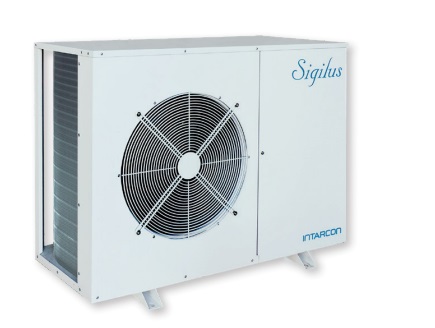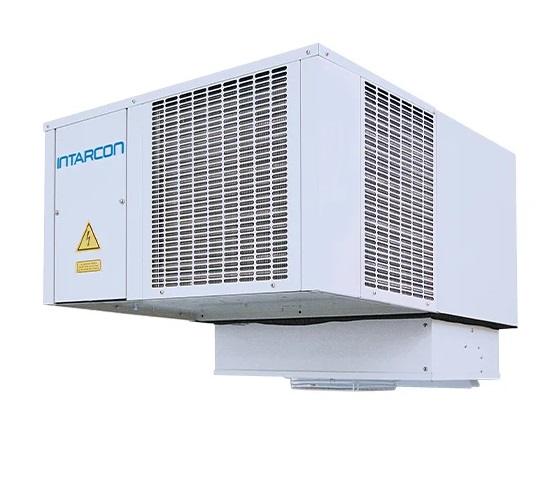From United State & Canada: ☎️ 1 800 798 3409
- Copper Pipes and Copper connections
-
Valves
- Heat Exchangers
- Pressure switches and thermostats
- Water Pumps And Motors
- Sight Glasses
- Sensors and Transmitters
- Contactors and Motor Starters
- Electronic Controls
- Liquid Level Controls
- Filters and Strainers
- Oil separators Liquid receiver
- HVAC Installation Maintenance
- Cold Rooms
- Cold Rooms With Monoblocks Or Splits Units
- Cold Rooms Of 1 To 3 M3 Of Volume Equipped With Refrigeration Equipment
- Cold Rooms From 3 To 6 M3 Of Volume Equipped With Refrigeration Equipment
- Cold Rooms From 6 To 9 M3 Of Volume Equipped With Refrigeration Equipment
- Cold Rooms From 9 To 12 M3 Of Volume Equipped With Refrigeration Equipment
- Cold Rooms From 12 To 15 M3 Of Volume Equipped With Refrigeration Equipment
- Cold Rooms From 15 To 18 M3 Of Volume Equipped With Refrigeration Equipment
- Cold Rooms From 18 To 21 M3 In Volume Equipped With Refrigeration Equipment
- Cold Rooms From 21 To 24 M3 Of Volume Equipped With Refrigeration Equipment
- Cold Rooms From 24 To 27 M3 Of Volume Equipped With Refrigeration Equipment
- Cold Rooms From 27 To 30 M3 Of Volume Equipped With Refrigeration Equipment
- Cold Rooms From 30 To 33 M3 Of Volume Equipped With Refrigeration Equipment
- Cold Rooms From 33 To 36 M3 Of Volume Equipped With Refrigeration Equipment
- Cold Rooms From 36 To 39 M3 Of Volume Equipped With Refrigeration Equipment
- Cold Rooms From 39 To 42 M3 Of Volume Equipped With Refrigeration Equipment
- Cold Rooms From 42 To 45 M3 Of Volume Equipped With Refrigeration Equipment
- Freezer Rooms
- Freezer Rooms With Monoblocks Or Splits Units
- Walk In Freezers From 1 To 5 M3 Of Volume Equipped With Refrigeration Equipment
- Walk In Freezers From 5 To 10 M3 Of Volume Equipped With Refrigeration Equipment
- Walk In Freezers From 10 To 15 M3 Of Volume Equipped With Refrigeration Equipment
- Walk In Freezers From 15 To 20 M3 Of Volume Equipped With Refrigeration Equipment
- Walk In Freezers From 20 To 25 M3 Of Volume Equipped With Refrigeration Equipment
- Walk In Freezers From 25 To 30 M3 Of Volume Equipped With Refrigeration Equipment
- Walk In Freezers From 30 To 35 M3 Of Volume Equipped With Refrigeration Equipment
- Walk In Freezers From 35 To 40 M3 Of Volume Equipped With Refrigeration Equipment
- Walk In Freezers From 40 To 45 M3 Of Volume Equipped With Refrigeration Equipment
- Walk In Freezers From 45 To 50 M3 Of Volume Equipped With Refrigeration Equipment
- Walk In Freezers From 50 To 55 M3 Of Volume Equipped With Refrigeration Equipment
- Walk In Freezers From 55 To 60 M3 Of Volume Equipped With Refrigeration Equipment
- Walk In Freezers From 60 To 65 M3 Of Volume Equipped With Refrigeration Equipment
- Walk In Freezers From 65 To 70 M3 Of Volume Equipped With Refrigeration Equipment
- Starting & Running Capacitor
SALE OF COLD EQUIPMENT
Find the best refrigeration equipment for your business. Buy your refrigeration equipment today! For refrigeration rooms, freezing rooms, wine cellars, drying rooms, and handling rooms
FiltersIndustrial refrigeration provides the cooling power for process chillers and is essential to the smooth operation of some of the world's largest industries. Food processing and cold storage of fresh produce are big markets for industrial refrigeration technologies
Industrial cold equipment
What is industrial refrigeration? Industrial refrigeration refers to refrigeration applications ranging from the highest to the lowest temperatures, in mechanical compression, reaching as low as -60°C. In general, the devices used in the industrial sector have a larger size, compared to the systems used in the commercial area. Because they are structures and equipment of great power and safety. Among some of its most frequent applications we can find ice plants, storage plants to preserve foods such as meat, chicken, fish and ice cream. They are also present in the dairy and brewing industries. In addition, outside the food sector, they are essential in various industrial processes in plants such as oil refineries and chemical processing, among others. Other than that, they're in logistics facilities, catering clean rooms, and on surfaces like hockey and ice-skating rinks. In this area, the most used fluid is ammonia. Refrigeration systems can vary, being single and double compression stages in systems that provide very low temperatures. In addition, there are direct refrigerant expansion and refrigerant charging systems, either by pump or gravity. There is even a closed indirect system with glycol as secondary liquid and ammonia as primary. Similarly, carbon dioxide in a secondary fluid is beginning to be used with ammonia primers in this field. Essentially, the compressors used in industrial refrigeration are screw compressors with mechanical joint couplings.
Other characteristics of industrial refrigeration
As we said, the application of industrial refrigeration equipment is very wide and can take various forms. For example, in the air conditioning of habitat spaces or for the conservation of food that is kept in refrigerators at a suitable temperature. In the same way, it benefits industrial processes that require a stable temperature or care, such as work machines. Additionally, we must know that cryogenic refrigeration is used specifically in scientific research processes and in internal combustion engines. The use of equipment in this segment may occur depending on a specific weather condition. An interesting fact in this regard is that water has a higher cooling factor than air because it has a higher thermal capacity, which means that the emission levels are very low, as far as the installation is concerned. One of the most important points of industrial refrigeration is that it helps reduce changes in processes at the biometric level. To the same extent, it is responsible for reducing the rate and loss of water, as well as the rate of ethylene production. In addition, this sector is associated with the sensitivity that the product may have to said substance, which is reduced as the product begins to cool. An example of this is the ripening time of fruits. At the same time, it allows the growth of certain types of vegetables to be delayed, combats possible infections and, in addition, is responsible for delaying the deterioration of some products.
Sale of cold equipment
If you are interested in buying any refrigeration equipment or spare parts, I leave you here the web link to take a look at it. You can make the purchase online, or go to the store in Valencia from Monday to Friday from 9:00 a.m. to 5:00 p.m.
Air conditioning unit cold heat
As the name suggests, a hot and cold air conditioner works in all climates by giving you instant cooling in the summers and keeping you warm and comfortable during the winters. So it's like a one-time investment for all your weather needs.
How does a hot and cold air conditioner work?
Heating and air conditioning work by producing heat or cool air through the vapor compression refrigeration cycle. A chemical refrigerant transports heat from one part of the system to another and then releases it.
Cold equipment for camera
Which equipment is appropriate for which cold room? Depending on the application or the operating temperature range of the cold room, we have: high and medium temperature cold rooms to preserve fresh products between 0 and 18ºC; low temperature or negative temperature cold rooms to preserve products between -28º and 0ºC; and freezing tunnels with temperatures of -30ºC.
Refrigeration equipment for high temperature rooms.
For small and medium-sized cold rooms and for product preservation applications between 8 and 18 ºC, split or semi-compact systems are available in silent or vertical construction, with a double-flow evaporation unit that allows air to circulate in the chamber. without directly influencing the product. These units are available with compressors between ½ and 10 HP with a cooling capacity between 1.5 and 17 kW. For larger cold rooms, the solution would be based on water, glycol or brine chillers with low R290 refrigerant charge for industrial applications. These chillers can integrate the hydraulic unit, being a Plug & Play that provides high efficiency to the installation. These chillers are available for a cooling capacity between 7 and 800 kW, depending on the chiller model.
Refrigeration equipment for positive and negative temperature rooms.
For small and medium-sized cold rooms for fresh product preservation applications between -5 and 10 °C, and product freezing between -5 and -25 °C, the compact or monobloc wall, door or ceiling units with R290, a natural refrigerant, may be the ideal solution. These units are available with a cooling capacity between 0.6 and 2.5 kW. If the installer decides to install an HFC unit, he can always do so with compact or monobloc units that are available for a cooling capacity between 0.5 and 4 kW, or with split or semi-compact systems that have a cooling capacity range between 0.6 and 14kw For larger industrial cold rooms, it is possible to install R290 or HFC compact equipment, direct expansion systems or indirect systems, according to the regulations in force in each country, since there are installation limitations depending on the refrigerant charge, or the kws of power
Refrigeration equipment for freezing tunnels.
For freezing tunnels with temperatures down to -30°C, it is recommended to install a compact direct expansion ammonia unit with low NH3 refrigerant charge technology, without water consumption and Plug & Play.
Aacore Supply NCAGE
Privacy Policy
Terms of Use
Shipping Policy
Returns and refunds
HVAC price catalog
Copyright © 2020 hvacspareparts.com
TRADEXUS MARKET, LLC
7345 W Sand Lake Rd,
STE 210 office 5361
Orlando, FL 32819 US
AACORE SUPPLY
C/ de Viver, 25, bajo Local, 46020
Valencia, España
МаркетВекс
Ул. Марагидик 19, етаж 2, офис 1
8000 Бургас, България
La Central du Froid SARL
Nº 12, Av Moulay Abdelhafid
90090 Tanger, Maroc
Opening Hours.
Our shops: Monday to Friday: 07.00 am - 01.00 pm (EST)
Online: 7 days a week, 365 days a year
Menu
Important Notice
Until 04/25/2025, our customer service will be available only via email due to an update in our systems. This update is part of our ongoing efforts to improve the quality and efficiency of our service.
We appreciate your understanding and patience during this period. We will be happy to assist you via email at support@hvacspareparts.com
If you are not yet a registered user, do so now, and start enjoying without waiting the excellent prices that we can offer you.
- Heat Exchangers












